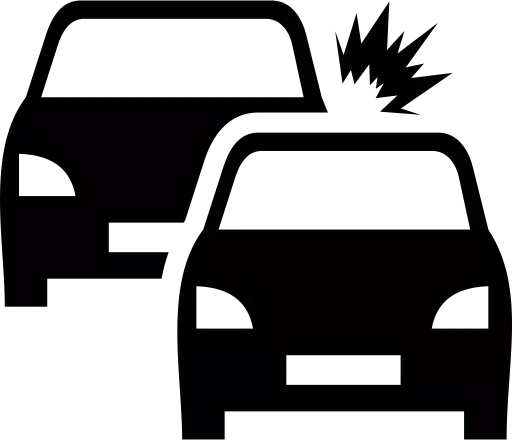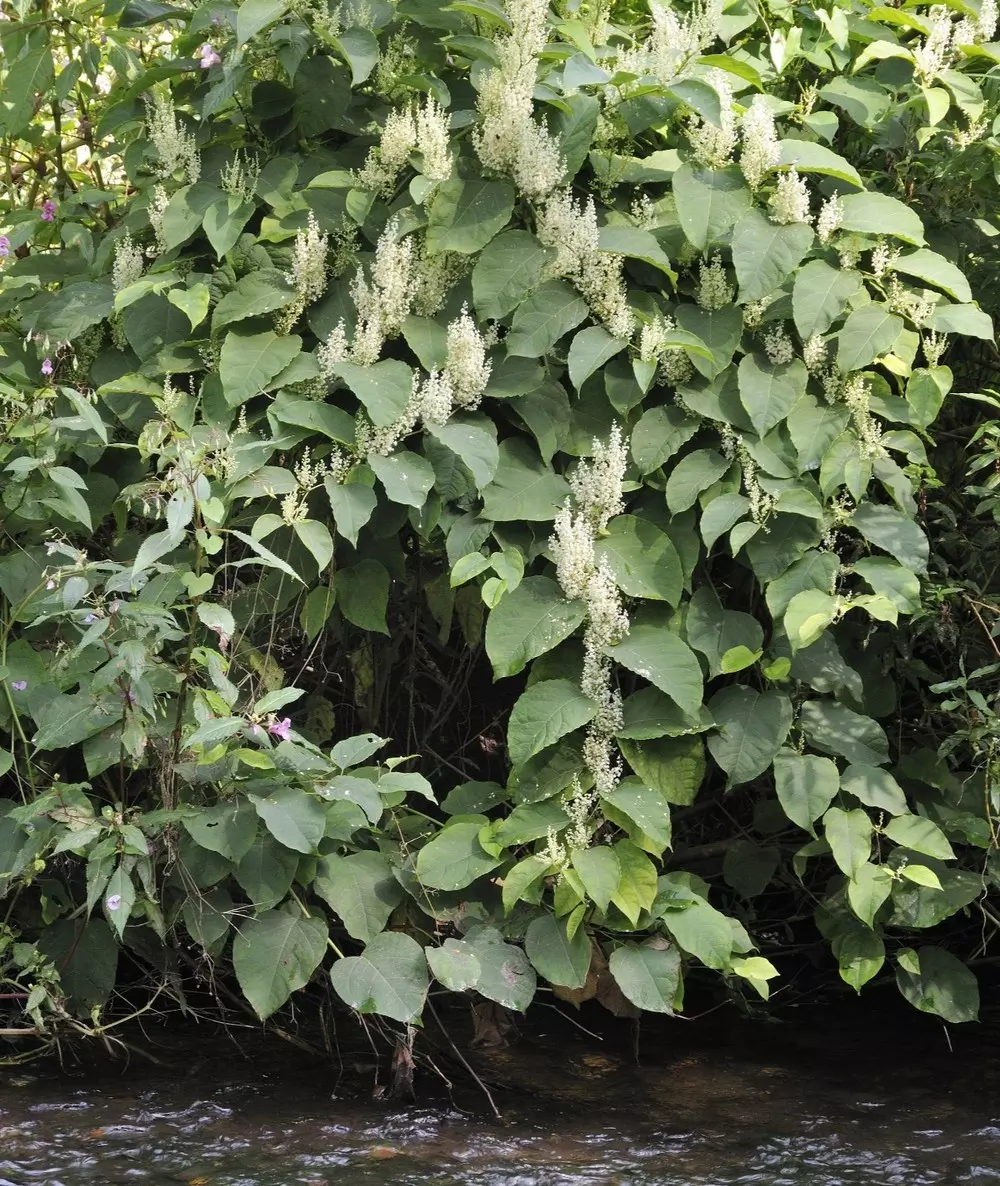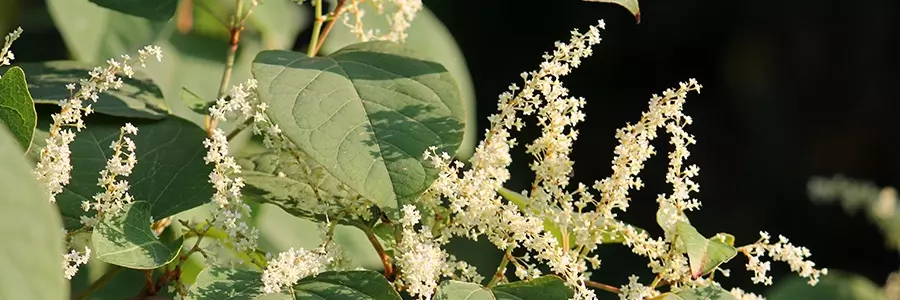Have you wanted to know why is Japanese Knotweed a problem? We look at the ways that Japanese Knotweed can damage your property and cost you money.
What is Japanese Knotweed?
Many invasive species are capable of damaging your property and costing you money. Japanese Knotweed is one of these invasive species:
The plant is a large clump-forming plant that can grow up to 3m tall. The Japanese Knotweed also has shield-like leaves that are light green and are around 10-15cm long. The roots of the Japanese Knotweed are thick and extensive and called rhizomes. This plant can spread via the rhizomes' fragments, and the inside of the rhizomes are also orangey-yellow.
All they need to grow is the size of your thumbnail. During winter, the Japanese Knotweed dies back, leaving only a tall brown cane. Each year, the plant begins to grow back from the rhizomes.
Main problems caused by Japanese Knotweed
Many problems are caused by Japanese Knotweed, which needs to be considered.

Biodiversity
The effect that the Japanese Knotweed has on the ecosystem is relatively large. It affects the ecosystems by crowding out the native vegetation and limiting the plant and animal diversity.

Safety
The safety of people is essential, and Knotweeds can hinder this. Knotweeds have been known to obstruct the view of railway signals and road signs and also causing trip hazards.

Recreation
Knotweeds can be very annoying to boaters, anglers and other types of river users.

Infrastructures
The underground stems of the Japanese Knotweeds growing (stout rhizomes) are well known for getting through Asphalt concrete walls, building foundations and drains.
This amount of significant damage can cause some severe costs for any developments plans that are made. Also, any soil that is contaminated should be treated as controlled waste.

Water quality and flood risk
Many aquatic organisms are less able to process the Japanese Knotweed leaf when compared with native vegetation. This also has the chance to alter food chains. Having too many Knotweed canes could reduce the capacity of the river channels to carry floodwater away. During winter, the Knotweed dies back, which exposes the riverbank and increases erosion.

Housing devaluation
If any Japanese Knotweeds are found in or around the property, this can hurt the cost. Many mortgages providers are beginning to refuse applications due to the sighting of Knotweeds. If you are trying to sell the house, this can affect the price you are selling it for as the growth from the Japanese Knotweed roots could have affected the foundation and other parts of the property, making it difficult to fix.
Can I get a mortgage if my home has Japanese Knotweed?
Having Japanese Knotweed in the property you are trying to buy can be a bit of an issue. This can hinder you from getting the mortgage you need for the property, but this does not stop you completely. Many mortgage companies would need some proof from the property's current owner, showing that they are currently treating this issue. As long as the treatment that is being done is satisfactory to them, you have a chance of getting the mortgage.
A TA6 should be given by the property's current owner, which should have extra details about the home on it. It should state whether Knotweed has been identified on the property. The seller should also sort out any professional treatments that are needed to remove it. You can also ask for advice from the mortgage company if needed on what needs to be done.
How could I be breaking the law?
Having Japanese Knotweed on your property can be pretty dangerous for your own and other peoples property. In the Wildlife & countryside Act 1981, allowing the Japanese Knotweed to spread beyond your control into other properties or wildlife is Illegal. This would include the Japanese Knotweed spreading into neighbouring lands through the rhizomes/roots of the plant underground. Before having the Japanese Knotweed, you should understand that the plant's roots or rhizomes can spread to 7 metres underground.
Whether you dig up or cut down the Japanese Knotweed, you must keep in mind that you are required to dispose of this correctly. Once you have removed the Knotweed from the ground, this is now classified as waste and must be taken to a licensed landfill site with the proper facilities to take care of the waste. This can be expensive. Disposing Knotweed waste anywhere else other than the licensed landfill site will be against the Environmental Protection Act 1990.
Japanese knotweed facts
There are many facts about Japanese Knotweed. This includes:
- The Japanese Knotweed is a tall, perennial (meaning a plant that can live more than 2 years) plant that gets wood-like rhizomes when it matures.
- The Japanese Knotweed was introduced to Europe during the mid-19th century. The package that contained the plant was sent to London in 1850.
- Even though the Japanese Knotweed was widely known for its ability to damage parts of the building, it was on sale for almost a century back then.
- Due to the Japanese Knotweed being able to grow so fast and get through most materials, it is registered and known as one of the most problematic weeds within the UK and Ireland. This is also due to its impact on the habitats close to rivers and streams and hard to eradicate.

How to avoid problems with Japanese Knotweed
Problems with Japanese Knotweed can be annoying and expensive, depending on the severity of the damage created.
Ensuring that you can identify Japanese Knotweed is one way to avoid many problems that it can cause. Catching this weed quickly will reduce the cost and damage that it creates:
- Ensure that any soil that you bring into your property is free from any Japanese Knotweed. This weed is generally spread through the rhizomes/roots of the plant, which are sometimes found in soil that has been moved.
- Sometimes, the rhizome fragments are related to being brought through by tools used in your garden. Ensuring that the tools brought inside are cleaned important to reduce the chance of any fragments going inside your property.
Removing Japanese Knotweed
When you are trying to remove Japanese Knotweed, using normal weed killer can sometimes affect it, but this is not certain. It is usually best for you to call in a professional to complete this take to ensure it is done quickly and efficiently without wasting your time.
Professionals sometimes have access to stronger chemicals that are better for removing the weeds, such as herbicide, and they have better tools that can help. If you want a fast solution, perhaps having experts dig out all the infected soil and remove all roots which are there and place back the rest of the soil. Some may say they provide an insurance backed guarantee so that any roots which return in that time will be covered.
Do you have a Japanese Knotweed problem? If you require Japanese Knotweed Removal in Essex or throughout the UK, contact our expert today.


